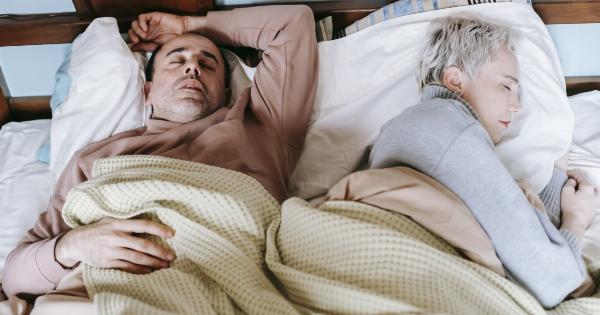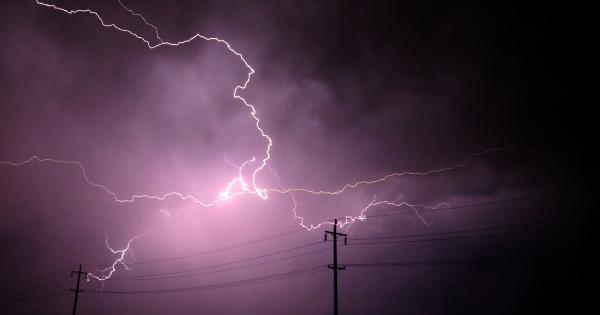Sleep paralysis and terrifying nightmares are experiences that have perplexed and terrified people for centuries. These occurrences often leave individuals feeling trapped, scared, and unable to move or escape their distressing scenarios.
While these incidents have been documented in various cultures and have been subject to countless interpretations, what do scientists really say about sleep paralysis and terrifying nightmares?.
The Definition of Sleep Paralysis
Sleep paralysis is a phenomenon that happens during the transitional phases between wakefulness and sleep. It occurs when a person is unable to move or speak, despite being fully conscious.
This temporary immobilization can last for a few seconds to several minutes and can be accompanied by intense fear, hallucinations, and a sense of an extraordinary presence in the room.
The Science behind Sleep Paralysis
Scientists believe that sleep paralysis is closely linked to rapid eye movement (REM) sleep, which is the phase where most dreaming occurs.
During REM sleep, our brain becomes highly active, paralyzing the muscles of our body to prevent us from acting out our dreams. This mechanism, known as REM atonia, safeguards us from potential harm while we sleep.
However, in the case of sleep paralysis, this paralysis extends beyond the REM sleep episode, causing a discrepancy between brain activity and body movement.
Most occurrences of sleep paralysis happen when a person transitions into or out of REM sleep, disrupting the transition process.
The Role of Sleep Disorders
Sleep paralysis is often associated with various sleep disorders, including narcolepsy, sleep apnea, and insomnia.
Individuals experiencing narcolepsy, a neurological disorder characterized by excessive daytime sleepiness, often encounter sleep paralysis episodes. Sleep apnea, a condition marked by interrupted breathing during sleep, can also contribute to the occurrence of sleep paralysis.
Researchers have found that sleep disorders may disrupt the normal sleep-wake cycle, leading to an increased likelihood of experiencing sleep paralysis.
Furthermore, factors such as stress, sleep deprivation, and irregular sleep patterns can exacerbate sleep disorders and contribute to the frequency and intensity of sleep paralysis episodes.
The Psychological Aspect of Sleep Paralysis
In addition to the physiological factors, psychologists emphasize the role of psychological factors in sleep paralysis experiences. Stress, anxiety, and trauma have all been linked to the occurrence of sleep paralysis and terrifying nightmares.
Studies suggest that individuals who experience sleep paralysis are more likely to have higher levels of stress and anxiety in their waking lives. Sleep paralysis can also be triggered by traumatic events, such as accidents or abuse.
The anxiety and fear associated with these events can manifest during sleep and result in sleep paralysis episodes.
The Cultural and Historical Perspectives
Sleep paralysis and terrifying nightmares have not only captivated the attention of scientists but also inspired various cultural interpretations throughout history.
Across different cultures, sleep paralysis has been attributed to supernatural forces, including demons, witches, and malevolent spirits.
In some cultures, sleep paralysis is seen as a spiritual experience or a sign of spiritual awakening. In others, it is believed to be caused by negative energy or the presence of ancestral spirits.
These cultural beliefs highlight the diverse interpretations of sleep paralysis and the ways it has been understood and explained over time.
The Scientific Explanations for Terrifying Nightmares
Terrifying nightmares often accompany sleep paralysis episodes, intensifying the distress and fear individuals experience during these episodes. Scientists propose several explanations for the occurrence of these unsettling dreams.
One theory suggests that the activation of the amygdala, the brain’s fear center, during sleep may contribute to the vivid and frightening nature of nightmares.
Other researchers argue that nightmares allow individuals to process and regulate emotions and that the activation of memories and emotions during sleep can result in terrifying dream scenarios.
Additionally, external factors such as medications, substance abuse, and trauma can contribute to the occurrence of nightmares.
For example, post-traumatic stress disorder (PTSD) often leads to vivid and distressing nightmares related to the traumatic event.
The Treatment and Management of Sleep Paralysis
While sleep paralysis can be a distressing experience, various strategies can help manage and reduce its frequency.
Improving sleep hygiene, ensuring a regular sleep schedule, and creating a comfortable sleep environment can contribute to better sleep and minimize episodes of sleep paralysis.
For individuals with underlying sleep disorders, seeking medical treatment and therapy can be beneficial. Sleep specialists can recommend treatments tailored to specific sleep disorders, potentially reducing the occurrence of sleep paralysis.
Stress management techniques, such as mindfulness meditation, deep breathing exercises, and cognitive-behavioral therapy, can also help individuals cope with stress and anxiety that may contribute to sleep paralysis episodes.
The Importance of Seeking Professional Help
While sleep paralysis is generally harmless and only lasts for a short duration, it can be a source of distress for individuals who experience it frequently or who have accompanying mental health concerns.
If sleep paralysis significantly impacts an individual’s quality of life or is accompanied by severe anxiety or depression, it is essential to seek professional help.
Mental health professionals, sleep specialists, and therapists can provide appropriate guidance, support, and treatment for managing sleep paralysis and its associated psychological effects.






























